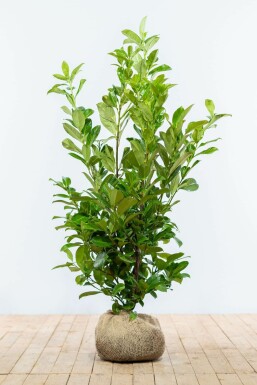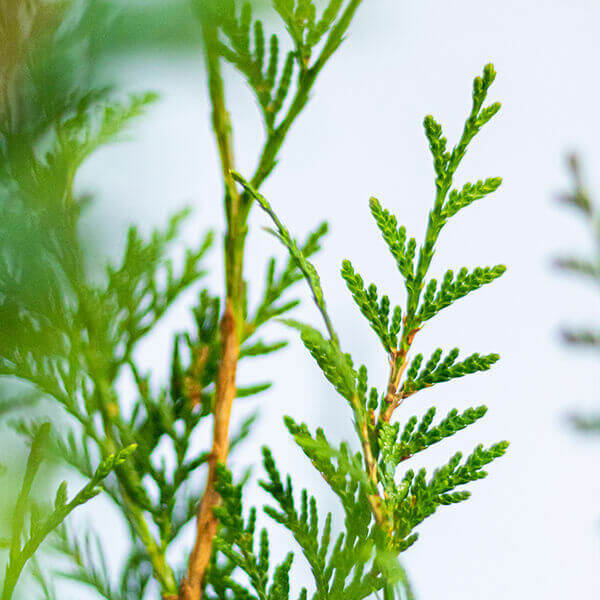Best Hedge Plants For Slopes
Improve your garden's attraction with lavish hedge ranges such as Yew (Taxus), Thuja, Laurel, Photinia, and Bamboo, commemorated for their structural stability and environmental benefits.
Yew and Thuja supply evergreen protection and winter durability, while Laurel provides quick growth and broad, aromatic leaves.
Photinia adds seasonal charm with its lively red foliage, and Bamboo lends a low-maintenance, peaceful atmosphere.
These hedges enhance air quality, decrease sound, and produce tranquil, personal spaces.
Appropriate planting, spacing, and upkeep ensure energetic development and ecological consistency.
Check out how these lush varieties can elevate your garden's charm and wellness.
Key Takeaways
Transform Your Garden With Lush Hedge Ranges
- Select Yew for its thick, evergreen growth and unequaled longevity.
- Choose Laurel for its quick development and broad leaves, ensuring quick privacy.
- Select Photinia for its lively seasonal foliage, which turns a striking dark red.
- Make use of Bamboo for a low-maintenance, winter-hardy hedge with aesthetic appeal.
- Space plants 2-3 per meter and prune regularly for optimal growth and health.
Popular Hedge Plants
When changing a garden with lush hedge ranges, it's necessary to consider popular hedge plants such as Yew, Thuja, Laurel, and Photinia due to their unique attributes and benefits.
Yew (Taxus) is extremely respected for its durability and thick, green development, making it a prime choice for withstanding landscapes.
Thuja is noted for its evergreen foliage and robust winter durability.
Photinia adds seasonal vibrancy with red leaves that darken in time, producing dynamic visual appeal.
Laurel provides rapid development and fragrant, broad leaves, ideal for quick privacy.
Additionally, Bamboo is an excellent choice for atmosphere, using a low-maintenance, winter-hardy choice that improves the garden's visual with its stylish, swaying walking sticks.
These selections cater to a variety of horticultural requirements and choices.
Benefits of Garden Hedges
Garden hedges offer a multitude of advantages, making them a valuable addition to any landscape. These natural barriers are affordable to implement and supply considerable wind protection, enhancing air blood circulation and adding to sound reduction. The thick foliage of hedges like Thuja and Beech makes sure privacy by blocking visibility, developing a tranquil and remote environment.
Hedges also play a crucial function in microclimate regulation, supplying a stable environment that cultivates plant development and minimizes temperature level fluctuations. Their detailed leaf structures filter contaminants, enhancing air quality and contributing to a much healthier garden ecosystem.
Additionally, hedges master sound reduction, soaking up and deflecting sound waves to lower ambient sound levels. This dual performance of providing both acoustic and visual privacy improves the overall serenity and visual appeal of any garden.
Planting and Maintenance Tips
For an effective hedge, careful preparation of the planting area is important. Make sure the soil has proper pH and drain to support strong root advancement.
Space the plants appropriately for the picked species. Water the hedge frequently throughout its preliminary development phase, adjusting as required with seasonal modifications.
Implement a methodical insect control and illness avoidance strategy, using natural or chemical treatments when essential. Regularly examine for aphids, termites, and fungal infections.
Apply mulch to maintain moisture and suppress weeds. Seasonal pruning promotes dense development and air blood circulation, necessary for plant health.
Following these guidelines will help you cultivate a dynamic, properly maintained hedge that boosts the beauty of your garden.
Spacing and Trimming Guidelines
Spacing and Trimming Guidelines
Proper spacing and trimming are essential for cultivating healthy, visually appealing hedges. Sufficient spacing guarantees each plant gets adequate nutrients, light, and air flow.
Follow these guidelines for ideal hedge upkeep:
- Spacing: Position hedge plants 2-3 plants per meter to motivate robust development.
- Pruning Methods: Routine pruning is vital for keeping wanted hedge height and shape. Cut brand-new development in summertime and cut back older wood during winter.
- Seasonal Care: Change cutting techniques and schedules according to seasonal requirements to guarantee plant health.
- Hedge Height: Routinely monitor and trim to keep the wanted hedge height and accomplish uniform visual appeals.
Sticking to these steps will ensure your hedge grows, boosting both the appeal and functionality of your garden.
Choosing the Right Hedge
Picking the Right Hedge
Choosing the appropriate hedge involves examining elements such as mature height, foliage density, and ecological durability. Successful hedge plant choice requires comprehending each species' growth attributes and site-specific versatility.
For instance, Yew (Taxus) provides excellent durability and dense development, while Thuja is notable for its winter season durability. In addition, considering upkeep requirements is important; fast-growing types like Laurel or Privet demand regular cutting, whereas low-maintenance alternatives like Bamboo or Ivy might be more suitable for those seeking very little maintenance.
Environmental factors such as soil type, light schedule, and wetness conditions ought to also assist the choice process. This mindful approach guarantees the picked hedges will flourish, supplying both aesthetic and practical advantages to the garden landscape.
Shipment and Planting Recommendations
To ensure your hedge plants flourish, they need to be delivered by specialized couriers and planted immediately upon arrival.
Follow these essential steps for effective planting:
- Soil Preparation: Improve the soil with organic matter to improve drain and nutrient material.
- Planting Depth: Create a trench twice the width and equal to the depth of the root ball.
- Watering Methods: Water completely after planting, keeping the soil consistently moist but not filled.
- Mulching: Use a layer of mulch to maintain moisture and suppress weeds.
Client Support and Service
Provided the vital function of timely assistance in horticultural pursuits, our customer support team is available 6 days a week through telephone, email, and social media to provide professional suggestions and promptly address any concerns. Their dedication to quick response times ensures customer complete satisfaction by solving questions connected to plant health, optimum planting approaches, and upkeep schedules.

Interaction Method
----------------------
Within 24 hr
Within 24 hours
This extensive support group, enhanced by an excellent 9.3/ 10 customer rating, highlights our commitment to improving the gardening experience for each customer.
Regularly Asked Concerns
The Length Of Time Does It Take for Hedge Plants to Establish?
Hedge plants generally require one to three years to become fully established, with the exact duration varying by species and growing conditions.
Effective care during this critical period is essential for robust growth. Consistent watering, alert weed control, and proper fertilizer application are essential in promoting strong root advancement.
For instance, fast-growing types like Laurel may establish quicker, while slower-growing varieties such as Yew may take longer. Thorough upkeep speeds up the establishment process, resulting in healthy and thick hedges.
What Are the very best Hedge Plants for Privacy?
The question of the finest hedge plants for personal privacy includes assessing evergreen and deciduous options.
Evergreen hedges like Thuja, Laurel, and Cypress provide year-round protection, making sure constant privacy.
In contrast, deciduous hedges such as Beech use seasonal personal privacy, shedding leaves in chillier months.
Key upkeep ideas for privacy hedges consist of routine trimming, fertilizing in spring, and correct spacing-- usually 2 to 3 plants per meter.
Furthermore, constant watering and diligent weed removal are essential for promoting healthy, thick development.
Can Hedge Plants Attract Wildlife to My Garden?
Yes, hedge plants can bring in wildlife to your garden by providing necessary benefits like shelter, food, and nesting sites, therefore improving regional biodiversity. Yew, holly, and laurel are excellent for drawing in birds, while ivy supports a variety of bugs.
Nevertheless, it's essential to note that there are some disadvantages, such as increased upkeep to manage bugs and regular maintenance. Carefully choosing and keeping hedge varieties can assist balance these drawbacks and advantages, ultimately promoting a sustainable and vibrant community in your garden.
Are There Any Flowering Hedge Plants Available?
Yes, there are flowering hedge plants readily available that can enhance the charm of your garden.
For instance, Elaeagnus, likewise known as Olive Willow, produces aromatic white flowers in the fall, including a touch of elegance.
Photinia, another popular choice, showcases dynamic red leaves that grow into a rich green, producing a vibrant visual result throughout the seasons.
To ensure these plants flourish, it's vital to practice correct pruning techniques and seasonal maintenance, such as trimming brand-new development in the summer season and cutting back in the winter season.
These procedures will assist maintain the health and aesthetic appeal of your flowering hedges.
How Do I Avoid Bugs in My Hedge Plants?
To avoid bugs in hedge plants, use natural pest control methods and preserve appropriate hedge care. Present helpful pests like ladybugs, which take advantage of hazardous pests, to develop a well balanced environment.
Frequently check your hedges for indications of problem and promptly remove any afflicted parts to avoid the spread. Make sure the health of your hedges by using well balanced fertilizers and offering sufficient water.
Make use of mulching to keep soil moisture and appropriate spacing to decrease plant stress and promote robust development. These practices jointly assist in lessening insect issues and maintaining a healthy hedge.
Conclusion
In essence, picking the Additional resources ideal hedge ranges such as Yew, Thuja, and Laurel can transform any garden into a tranquil haven. These plants supply year-round plant, enhance aesthetic appeal, and deal useful benefits like sound decrease and wind security.
Proper planting strategies, precise spacing, consistent watering, and seasonal cutting are crucial for ideal growth.
Reliable shipment services and professional customer assistance guarantee a smooth experience from purchase to planting, making it easier than ever to elevate your outside space.
Garden hedges use a wide variety of benefits, making them an important addition to any landscape. These natural barriers are affordable to implement and offer significant wind security, enhancing air blood circulation and contributing to noise decrease. The dense foliage of hedges like Thuja and Beech makes sure privacy by blocking visibility, producing a serene and secluded environment.

Pruning Methods: Regular pruning is essential for keeping preferred hedge height and shape. Trim new development in summertime and cut back older wood during winter season.
Comments on “Hedge Plants For Living Walls”